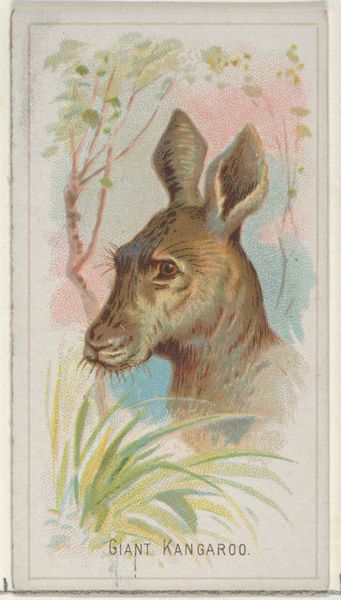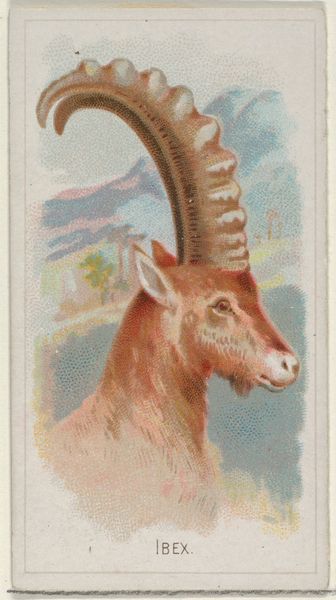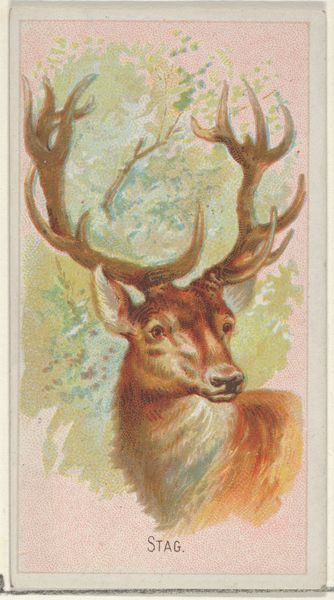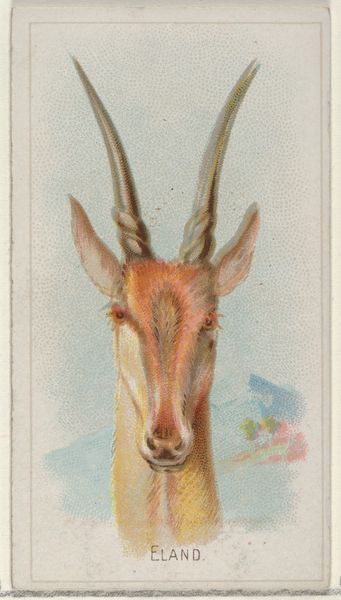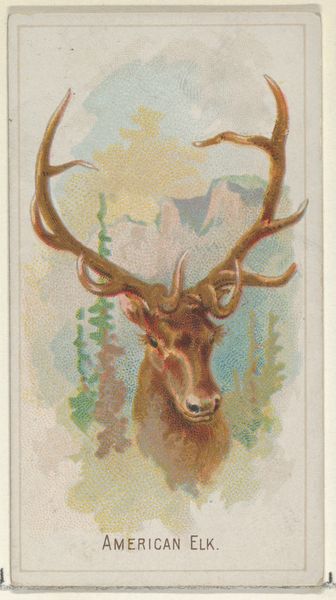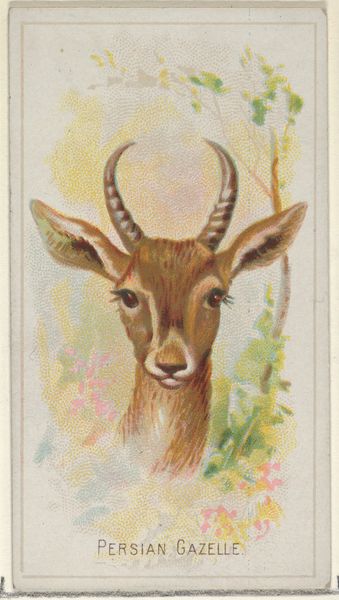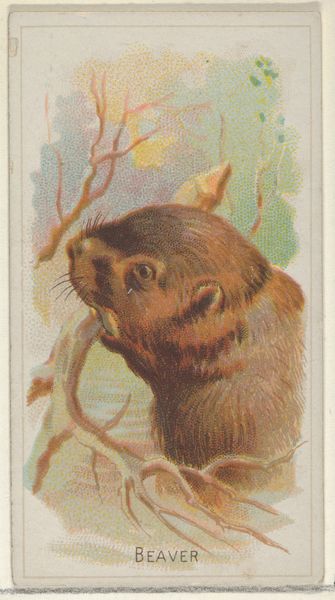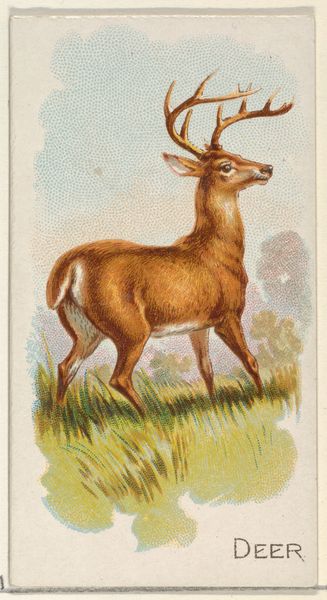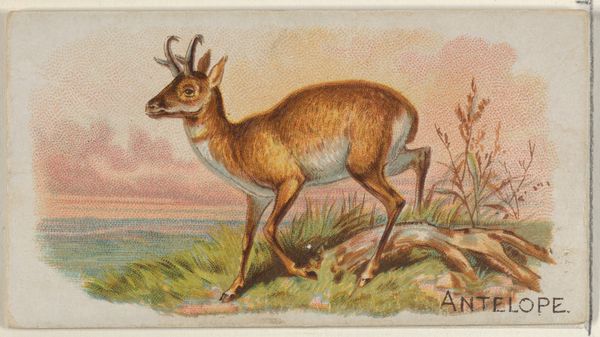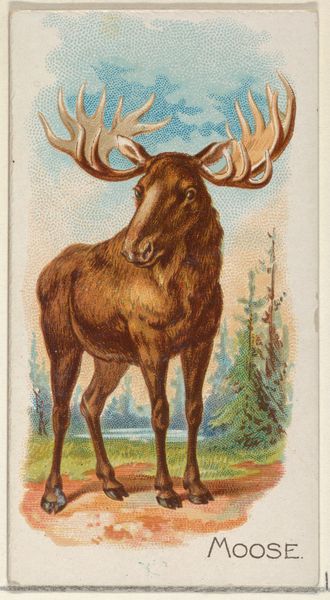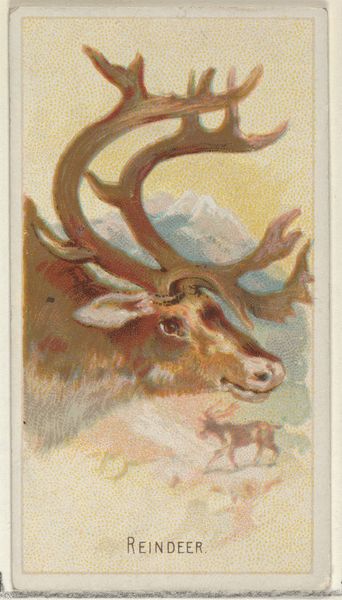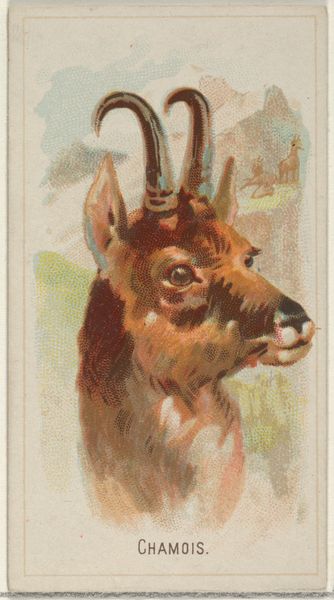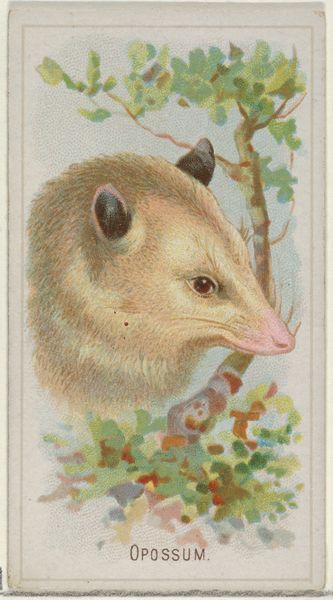
Prong-Horn Antelope, from the Wild Animals of the World series (N25) for Allen & Ginter Cigarettes 1888
0:00
0:00
drawing, coloured-pencil, print
#
drawing
#
coloured-pencil
# print
#
impressionism
#
landscape
#
coloured pencil
Dimensions: Sheet: 2 3/4 x 1 1/2 in. (7 x 3.8 cm)
Copyright: Public Domain
Curator: Let’s talk about this fascinating card: “Prong-Horn Antelope,” dating back to 1888, it comes from the "Wild Animals of the World" series produced by Allen & Ginter. What are your initial impressions? Editor: I'm immediately struck by how serene and composed the antelope appears. The colours, especially the soft pastels in the background, lend the image a calm, almost ethereal quality. Curator: Indeed. Allen & Ginter were a tobacco company, and these cards were included in cigarette packs. This was a way to entice customers. It speaks to a broader social context, where images of exotic wildlife became marketable commodities, reflecting Victorian fascination with natural history. The “Wild Animals of the World” series suggests an attempt to classify and categorize, much like colonial expeditions and surveys. Editor: Absolutely, that framing is telling. It connects to larger issues of representation and power, especially when viewed through postcolonial lenses. I'm curious, how might the depiction of this antelope speak to contemporary discussions surrounding animal rights and conservation efforts? Does the image romanticize a natural world, distinct and separate from the exploitative nature of the industry promoting it? Curator: The card's creation process also intrigues me; they employed coloured pencils and then prints. The impressionistic style is unexpected; it moves away from the purely representational mode we might expect in natural history illustrations from this period. Editor: The very act of creating and disseminating this image, in a capitalist framework, highlights our complicated relationship with nature. How did the consumer in 1888 perceive this card? It certainly differs from a twenty-first-century reading. Curator: Without question. These cards would have circulated within very specific social networks and contributed to forming and disseminating ideas about both commerce and wildness. This tiny rectangle speaks to the politics of image making and the projection of power onto nature itself. Editor: Right. It is amazing to consider the convergence of nature, industry, and popular culture condensed in this miniature format. These layered meanings reveal how much we can extract from such seemingly simple artifact. Curator: A great observation. Ultimately, analyzing a cigarette card allows us a point of entry into late nineteenth century attitudes toward wildlife, advertising, and the public role of art.
Comments
No comments
Be the first to comment and join the conversation on the ultimate creative platform.

